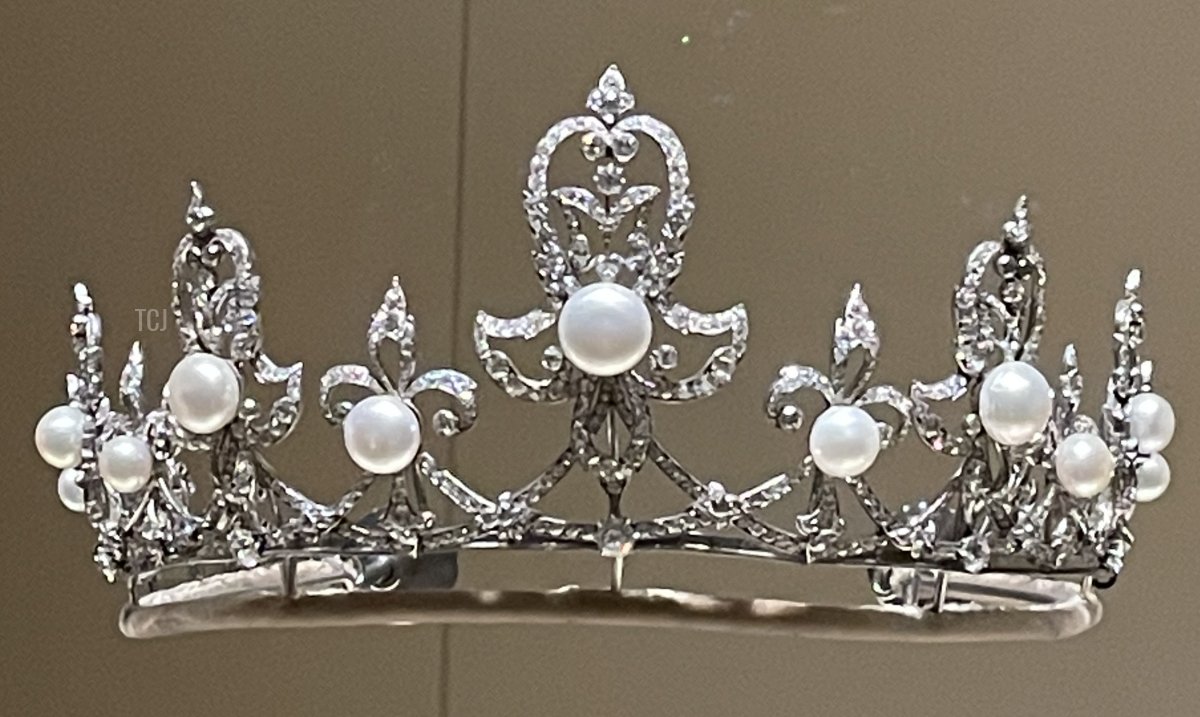
Before June draws to a close, we’ve got time for a few more fabulous pearls! One of our generous readers, the lovely Joey, lives in Qatar and has previously shared his photographs from a visit to the National Museum in Doha. He recently made another visit and snapped some images of some of the spectacular pearl pieces on display.
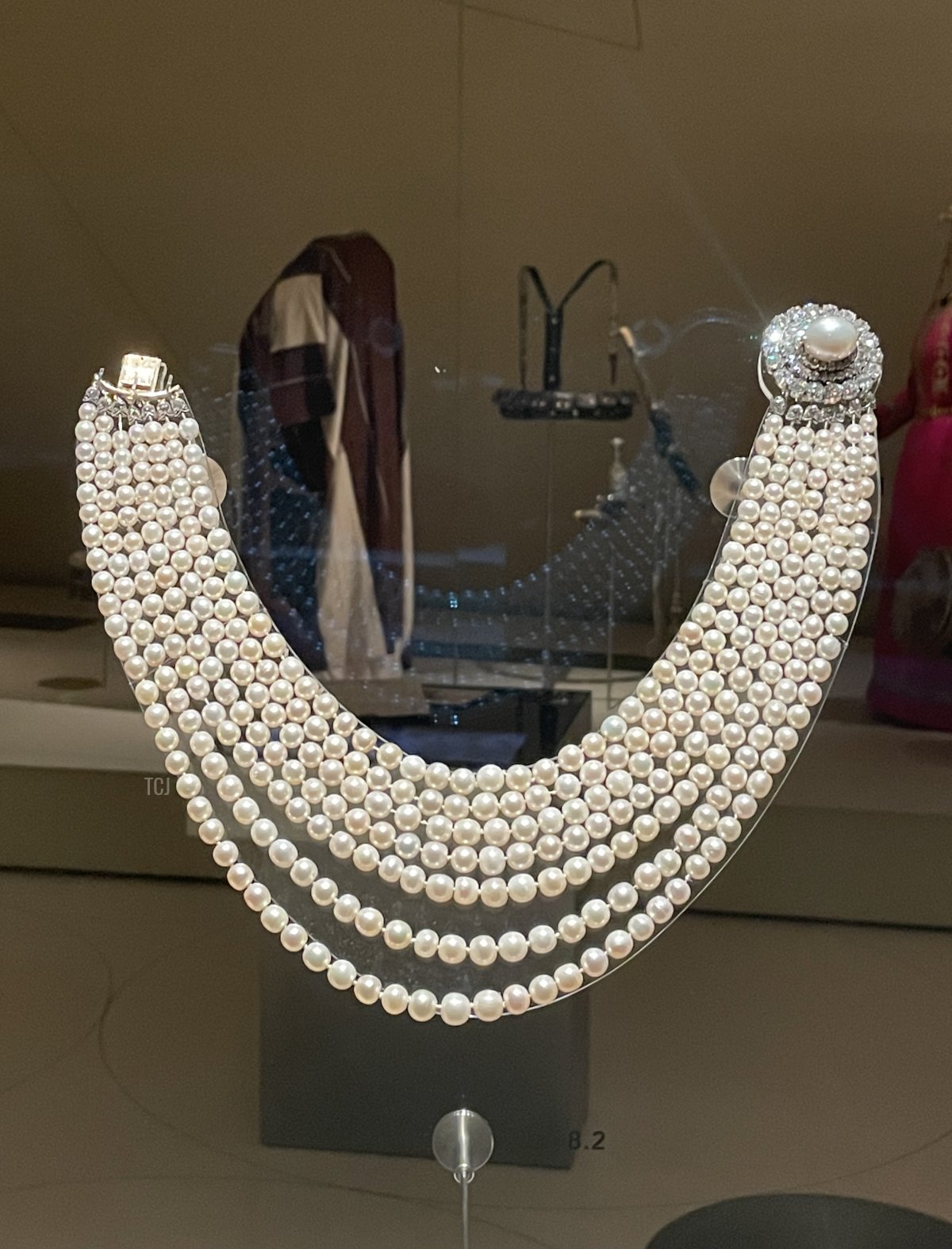
We’ll begin with an absolute show-stopper: a seven-row pearl necklace with an incredible diamond and pearl cluster clasp. The necklace dates to the 1880s and was once owned by the Kinskys, a Czech noble family that rose to prominence in Austria-Hungary at the Habsburg court. To us, the Kinsky family is probably most recognizable for their marriages to members of the princely family of Liechtenstein. Countess Franziska Kinsky (1813-1881) married Prince Alois II of Liechtenstein in 1831 and was the mother of two sovereign princes, Prince Johann II and Prince Franz I. More than a century later, Countess Marie Kinsky (1940-2021) married Prince Hans-Adam II of Liechtenstein. Their son, Hereditary Prince Alois, has been the regent of the principality since 2004.
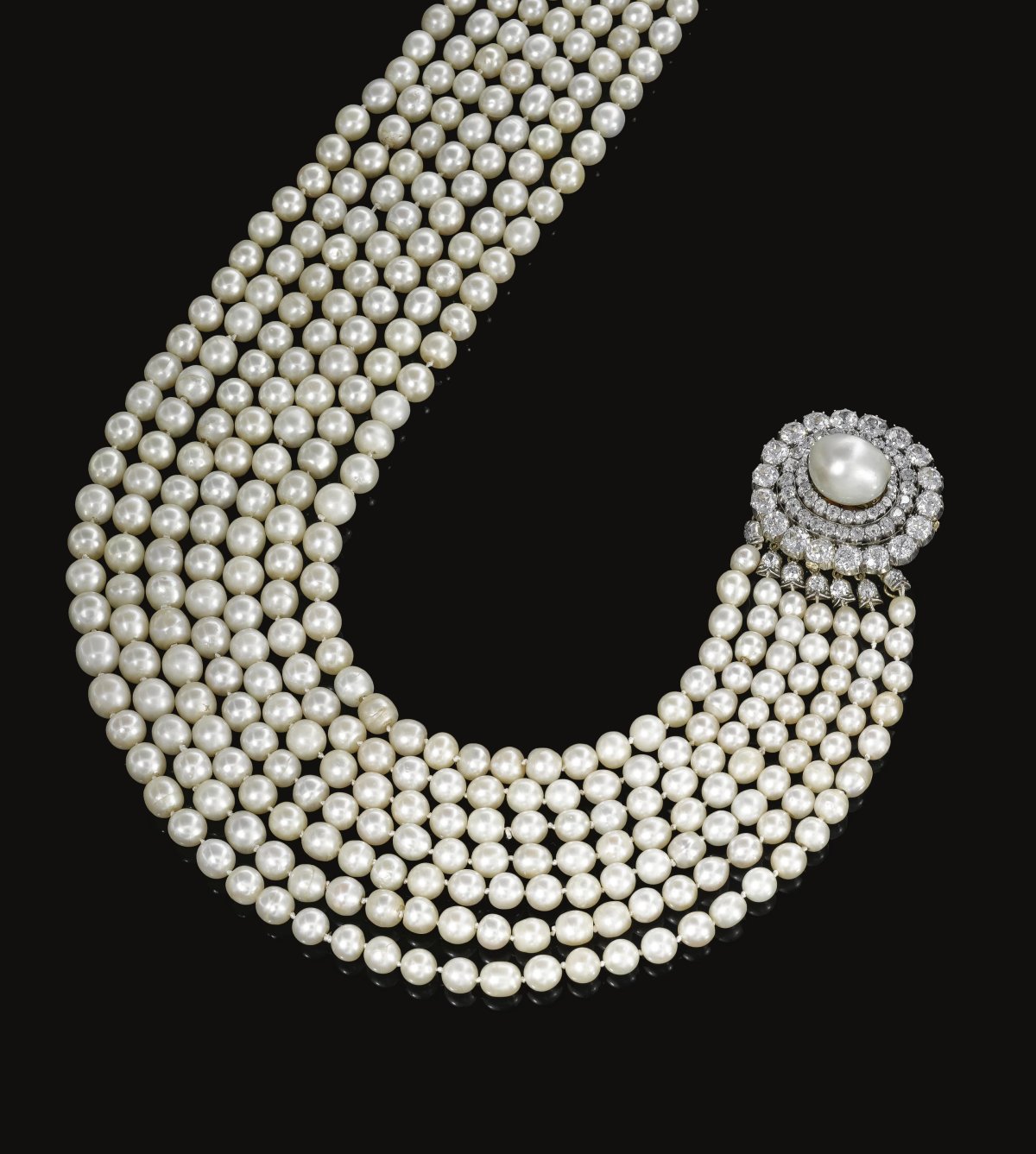
Sotheby’s sold the necklace in Geneva in May 2012. The lot notes from that auction describe the necklace as consisting of “seven graduated rows of natural pearls, to a clasp of concentric design set with circular-cut and cushion-shaped diamonds and a natural pearl.” The clasp, Sotheby’s noted, is detachable but does not come with a brooch fitting. (Missed opportunity there.) The piece sold in 2012 for 1,142,500 Swiss francs, far exceeding its auction estimate.
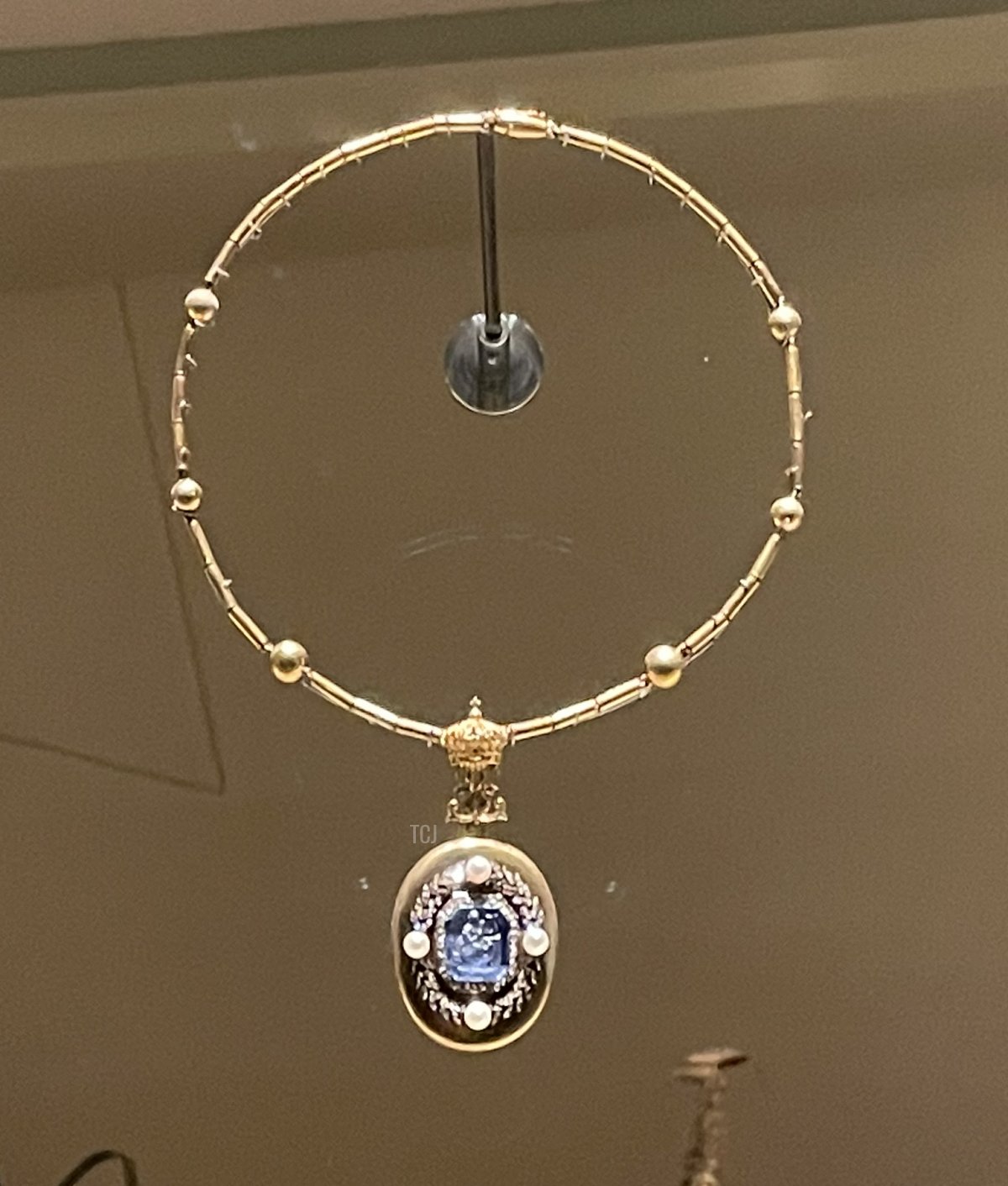
From another nineteenth-century corner of the continent, this gold locket features a carved sapphire cameo, depicting a muse playing the lyre, surrounded by diamonds and four round pearls. It’s topped by an imperial crown and the cypher of its original owner, Empress Eugénie of France. The inside of the locket holds a picture of Eugénie as well.
Made around 1860, the locket was supposedly given by Eugénie to Lady Burgoyne, wife of Sir John Montague Burgoyne, 10th Bt. (1832-1921), as a token of gratitude. When Eugénie fled France after the Battle of Sedan in 1870, she hitched a ride at Deauville with the Burgoynes on their yacht, Gazelle, on which they were returning to the Isle of Wight. Eugénie gave the locket to Sir John’s wife, Amy Henrietta. The Burgoynes maintained a friendship with the former empress, who sent messages of support during Amy’s final illness in 1895.
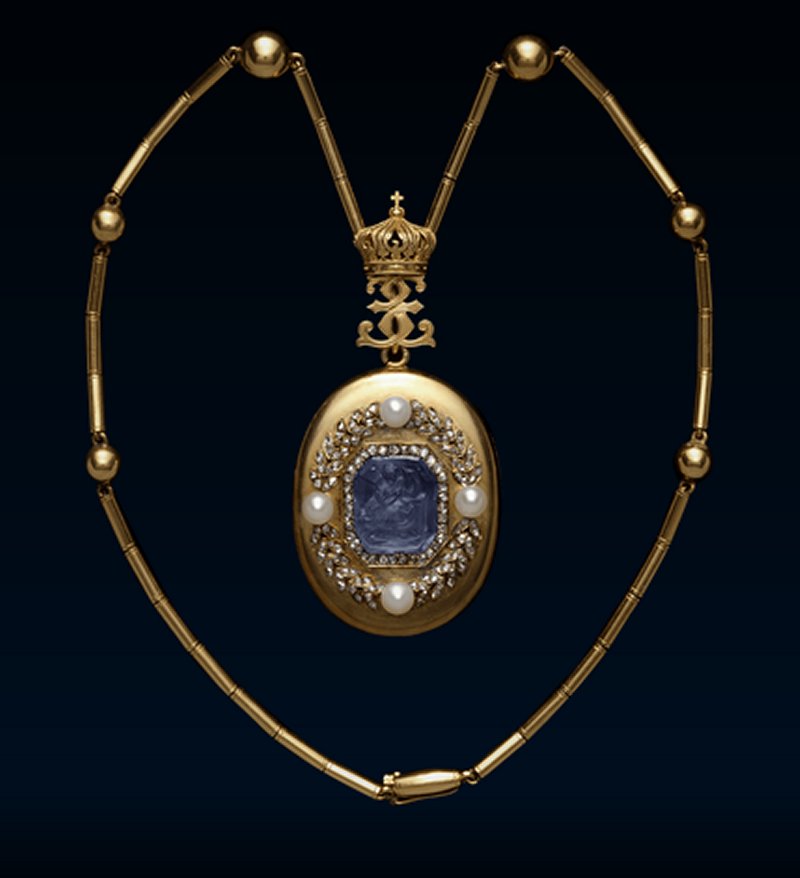
Much later, the locket was part of the collection of Tokyo’s Albion Art Institute at one point. This photograph of the locket is from its time with the Albion collection.
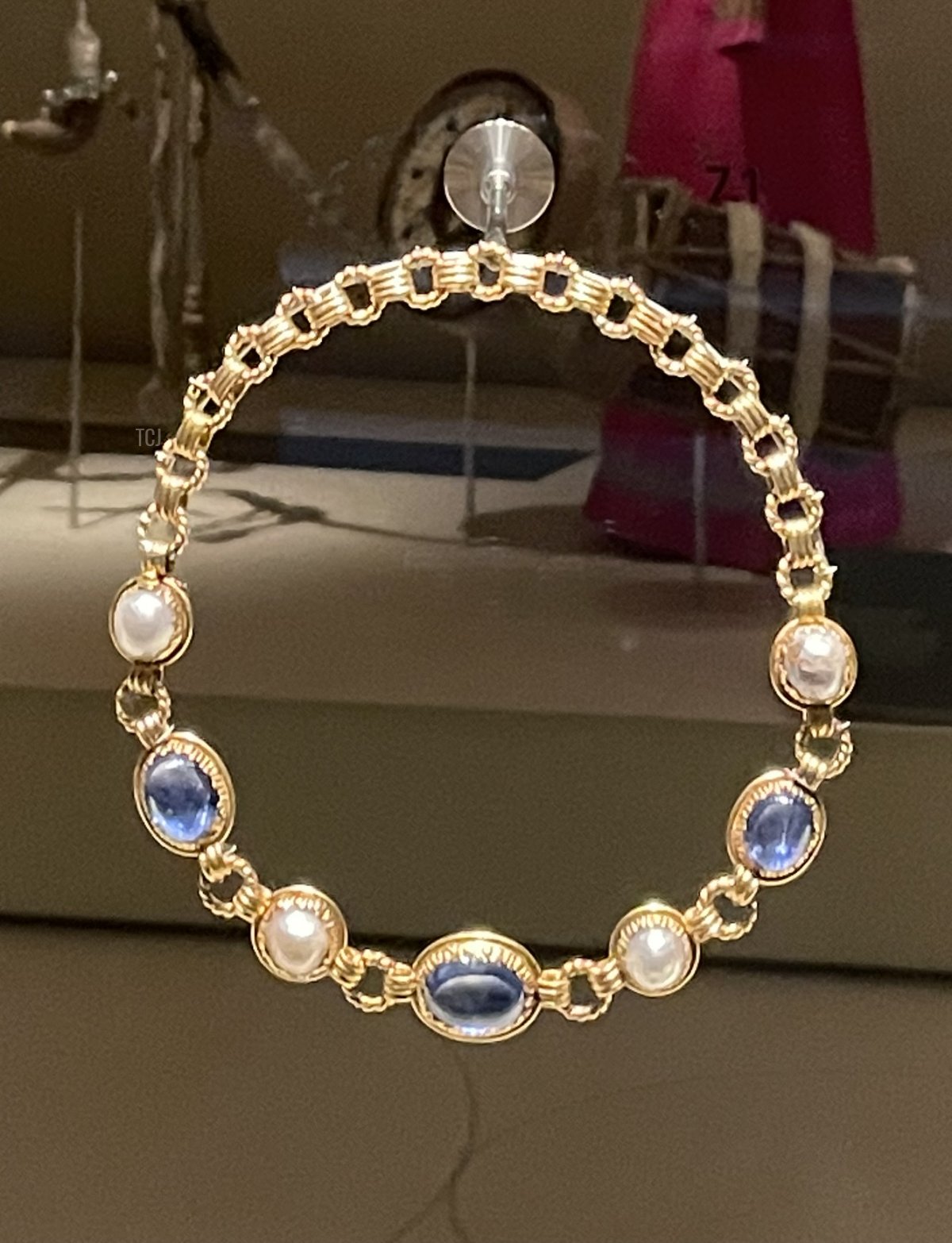
Empress Eugénie’s locket is displayed alongside this gold necklace, which looks a bit more modern to me. It’s set with sapphires and pearls as well.
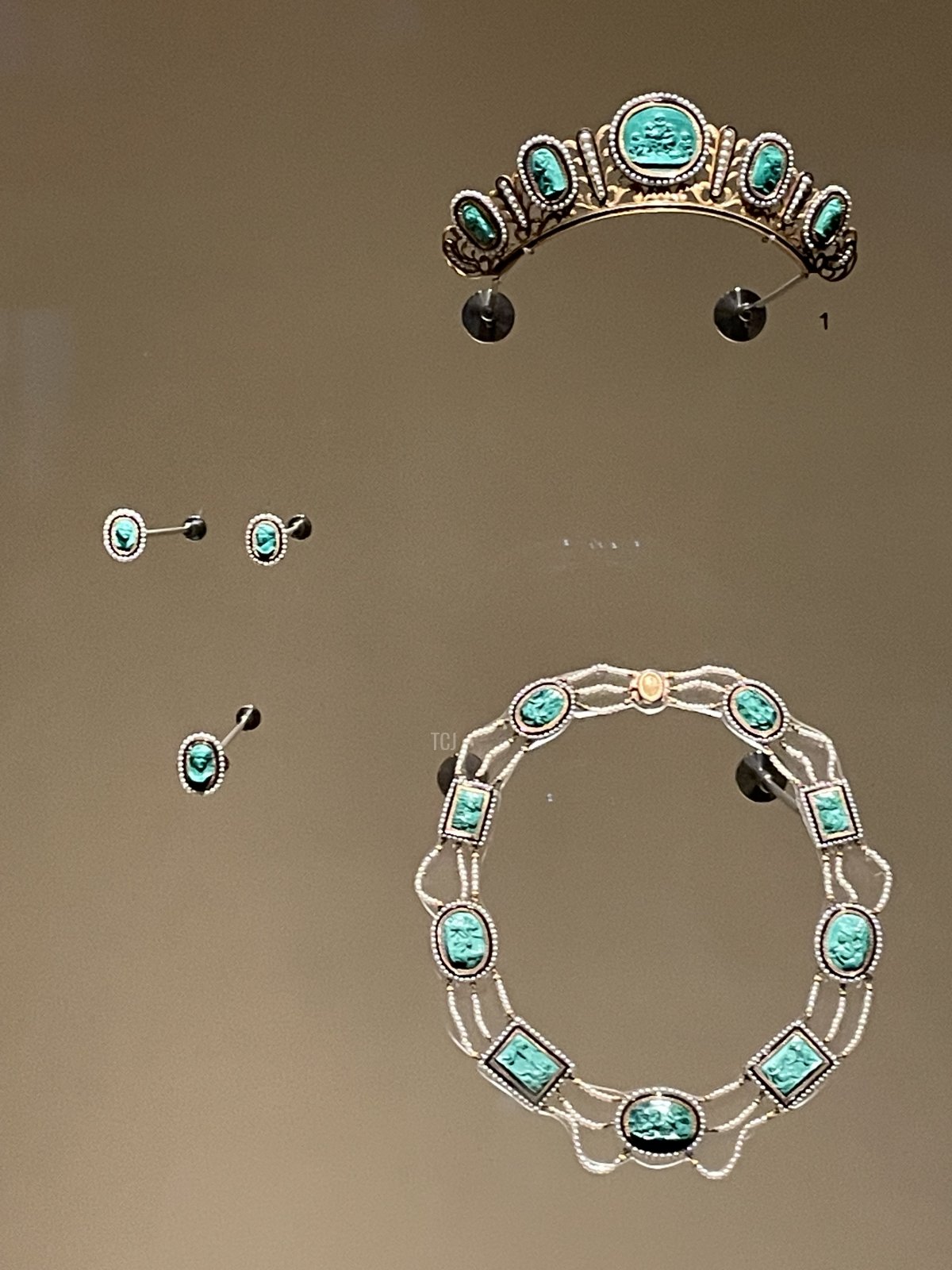
Joey also highlighted this magnificent French parure from the museum’s collections. The set, made around 1810, features malachite cameos surrounded by small pearls and set in gold. It shares some design similarities with the malachite parure made during the same period for Queen Desideria, wife of King Carl XIV Johan of Sweden, and to the malachite set made around 1810 for Empress Joséphine by Nitot.
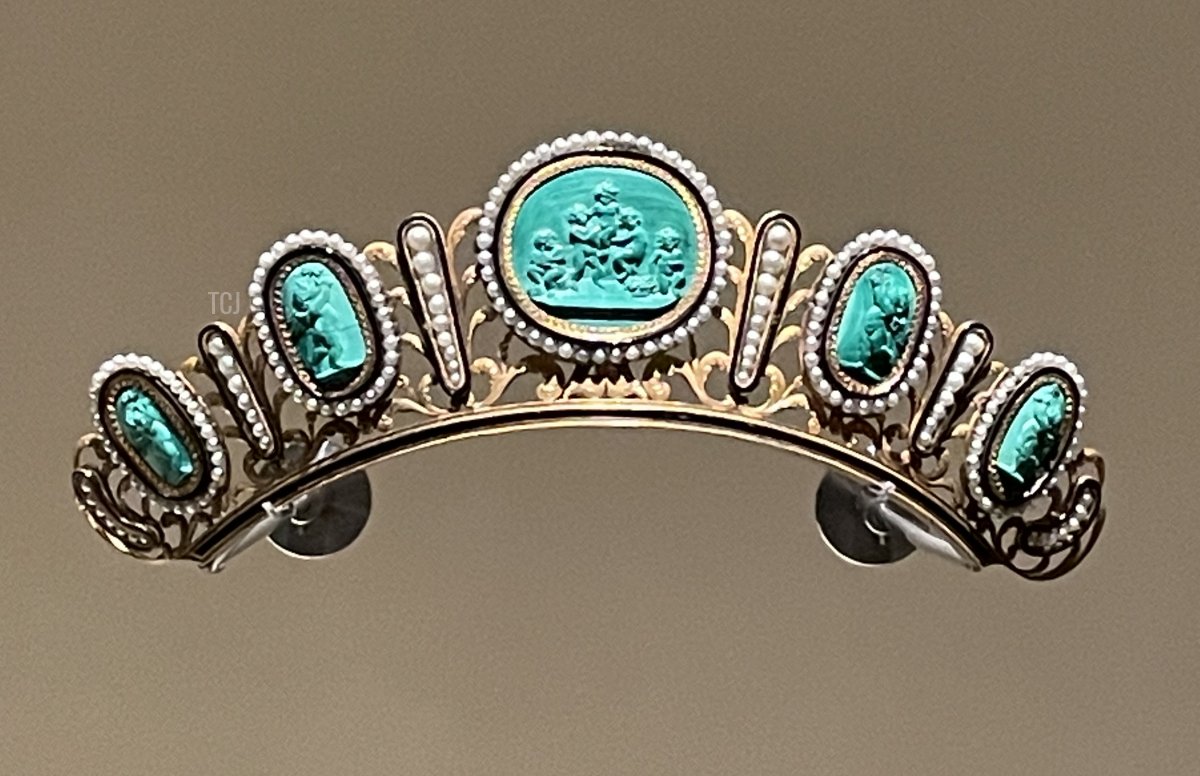
The cameos on the malachite set in the Qatar museum collection feature scenes of children at play, as well as the usual portraits of various Greco-Roman gods.
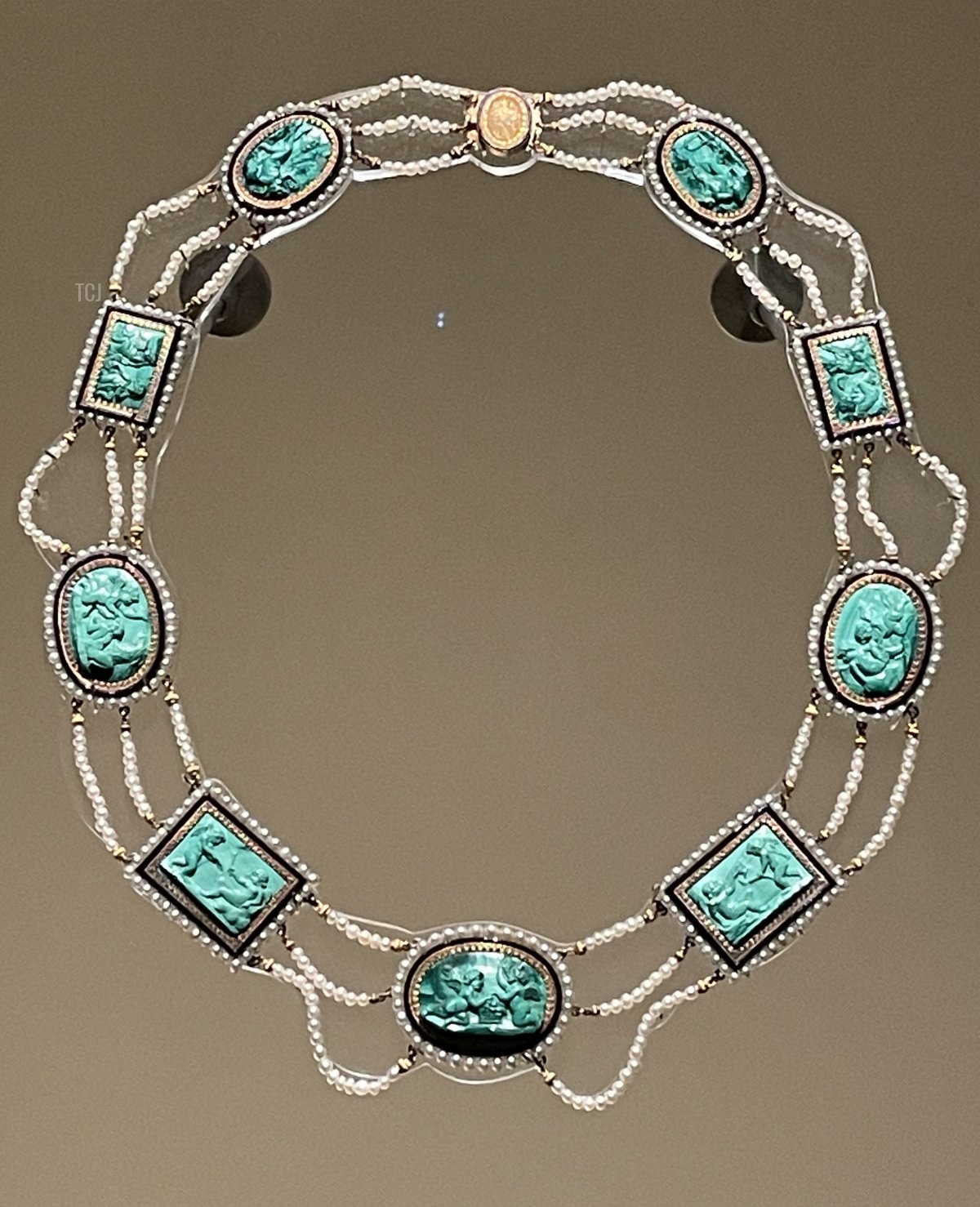
Here’s a look at the necklace, with its seed pearl string spacers. The necklace recalls the design of the cameo necklace from the present Swedish royal collection.
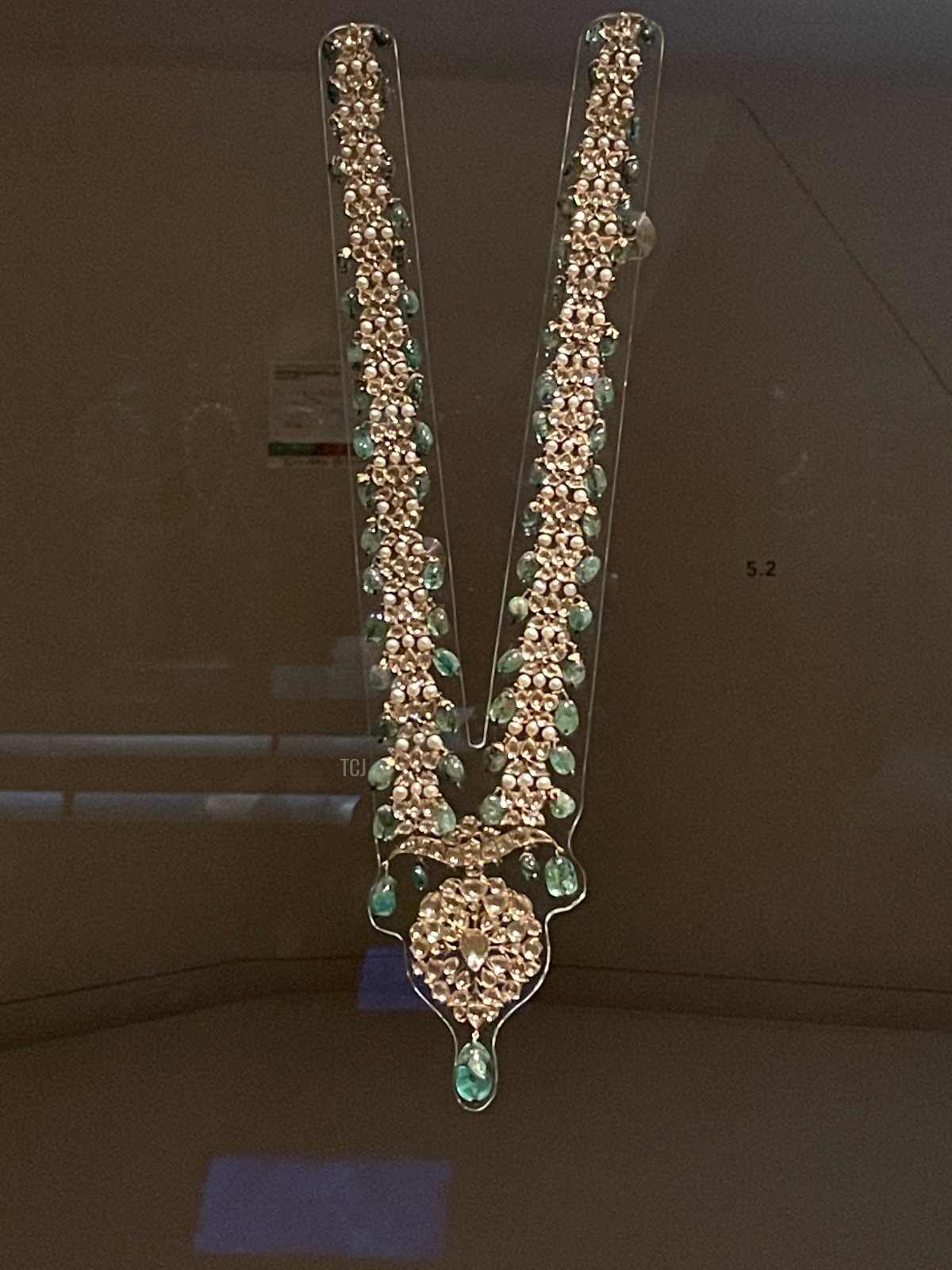
And speaking of necklaces: how about this diamond, emerald, and pearl necklace showcased during Joey’s museum visit?
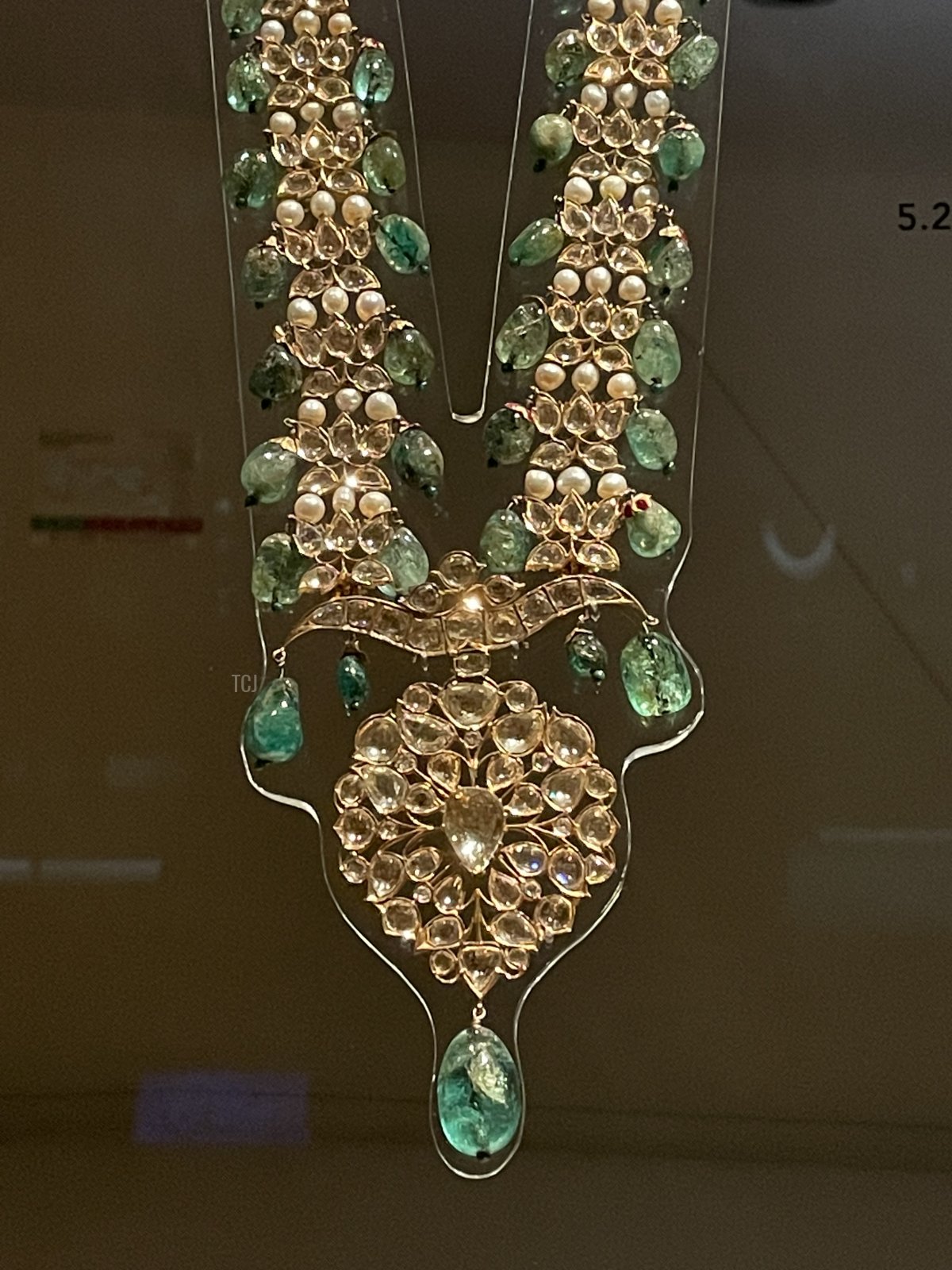
This har murassa, a traditional Indian necklace, dates to the nineteenth century. It’s made of pearls and table-cut diamonds with drilled emerald cabochon pendants. A similar necklace was worn in 1906 by the last Nizam of Hyderabad, Mir Osman Ali Khan, on his wedding day. You can see a photo of him wearing the necklace, as well as detailed photographs of the necklace itself, in Usha R Bala Krishnan’s Jewels of the Nizams (2001).
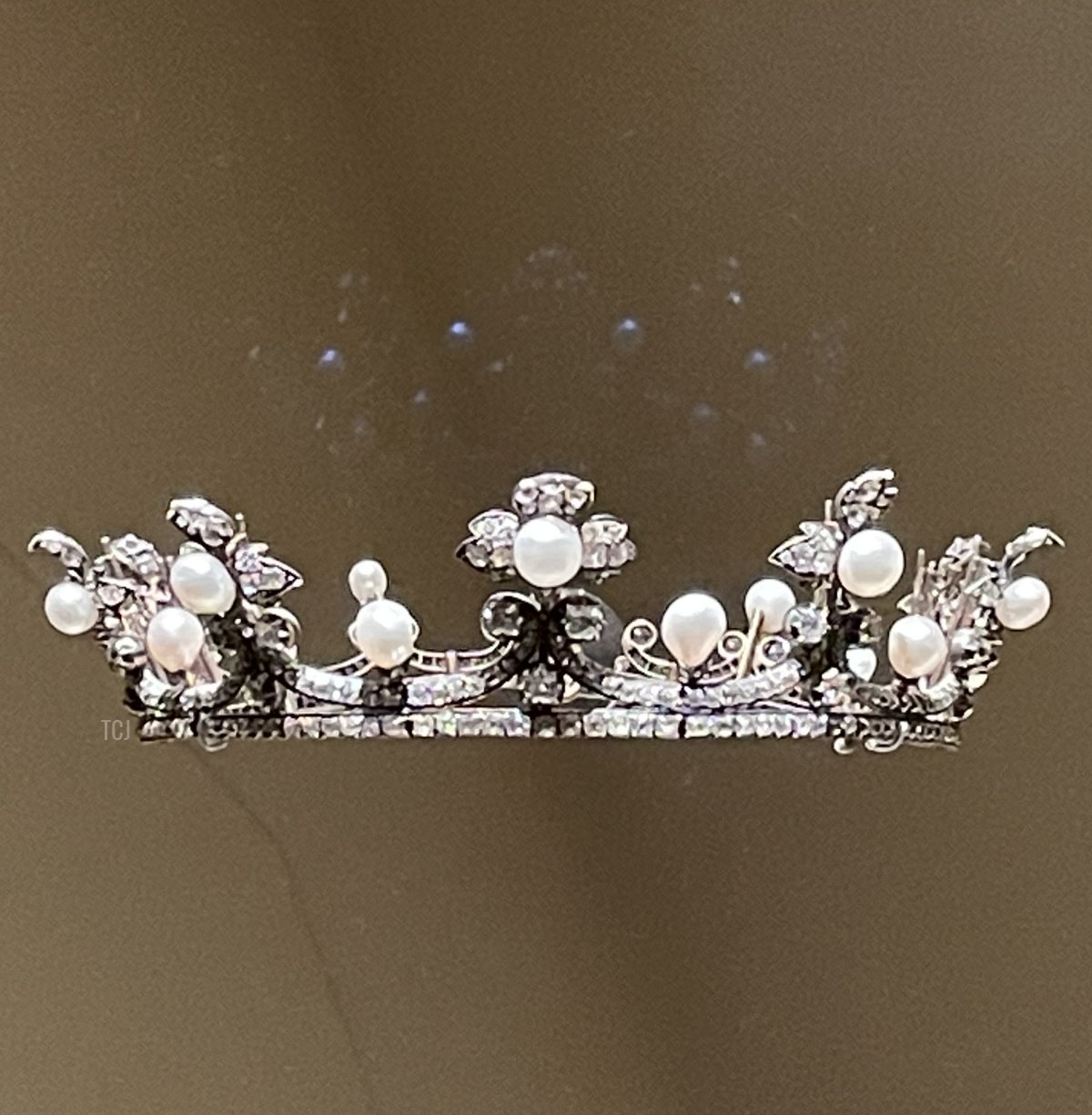
This petite diamond and pearl tiara features strawberry-leaf trefoils in its design. The museum notes that it was made by Mellerio for a member of the French imperial family in the nineteenth century. That person was Stéphanie de Beauharnais, the adopted daughter of Napoleon Bonaparte who later became Grand Duchess of Baden.
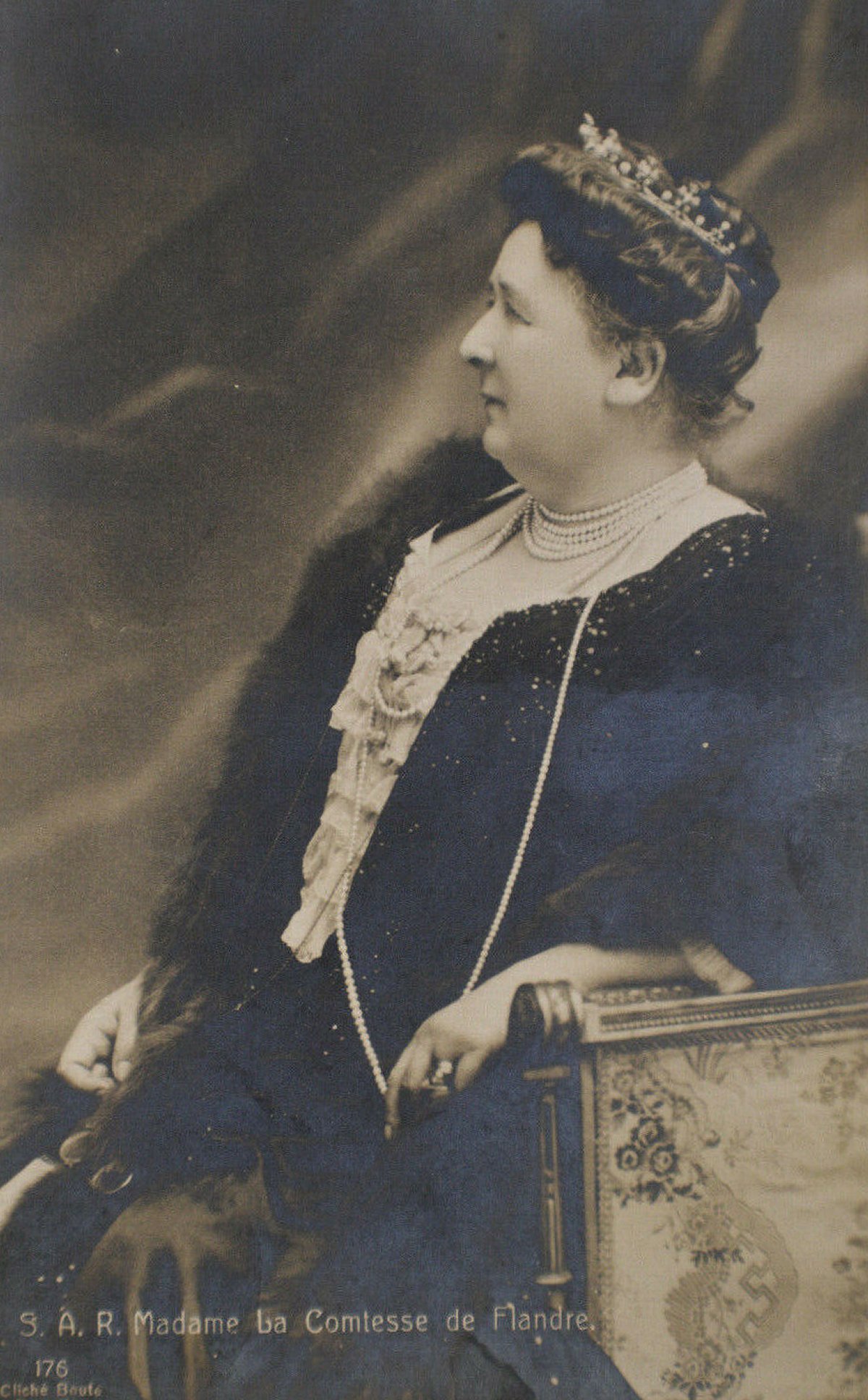
The diamond and pearl passed to Grand Duchess Stéphanie’s daughter, Princess Joséphine of Baden, and then to her daughter, Princess Marie of Hohenzollern-Sigmaringen. Marie married the Count of Flanders, the third son of King Leopold I of Belgium, in 1867. Like Empress Eugénie’s locket, the diamond and pearl tiara was once part of the Albion Art Institute’s jewelry collection.
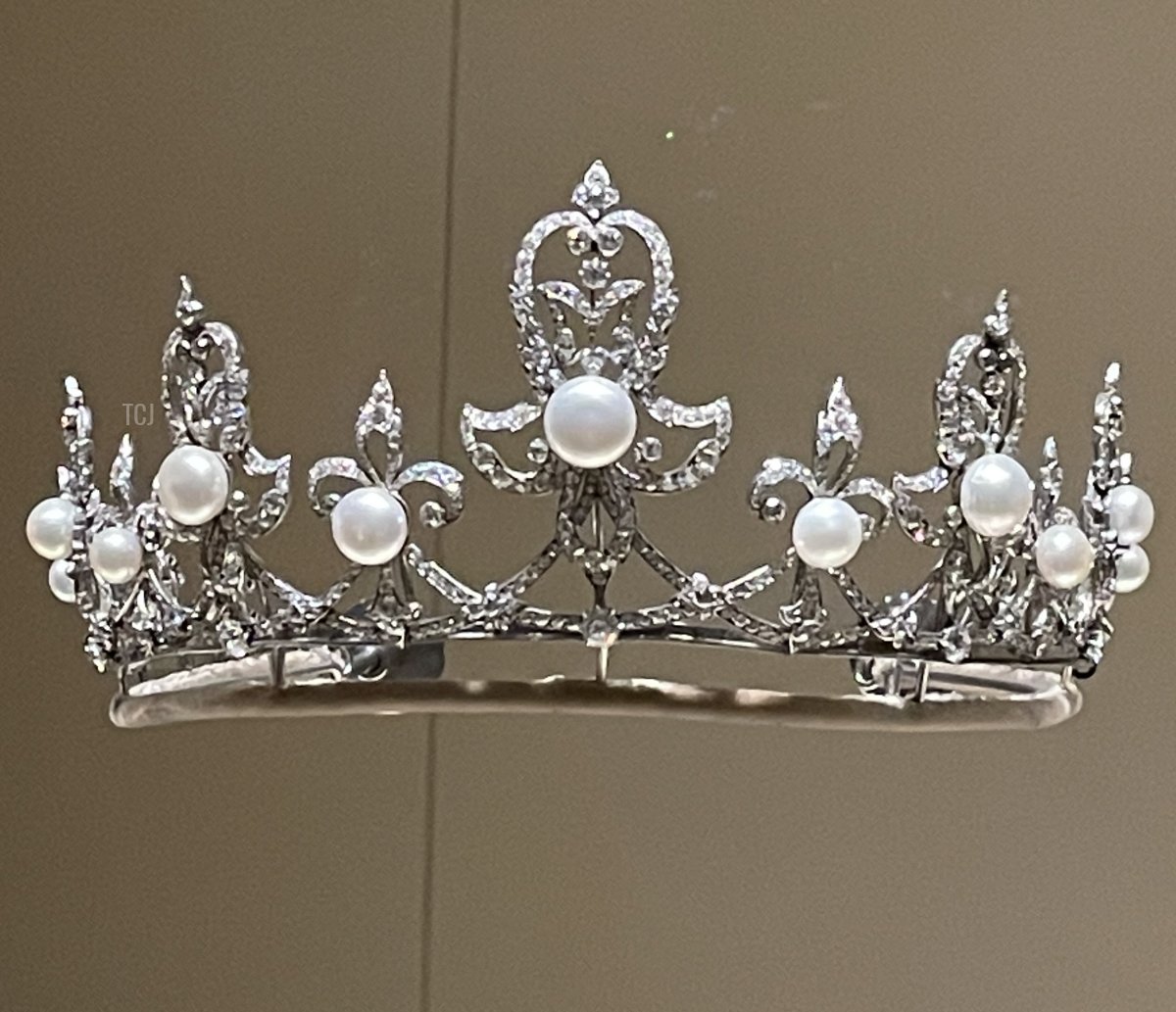
The museum also features this grand diamond and pearl tiara, which was worn by someone with close ties to the British royal family. Made of silver, diamonds, and pearls, the convertible nineteenth-century jewel belonged to Raine McCorquodale.
The daughter of romance novelist Barbara Cartland, Raine married into a trio of aristocratic families. She was Countess of Dartmouth through her marriage to the 9th Earl of Dartmouth, and then Countess Spencer through her marriage to the 8th Earl Spencer. (That marriage also made her the stepmother of Diana, Princess of Wales.) After her second husband’s death, Raine married a French aristocrat, Count Jean-François Pineton de Chambrun.
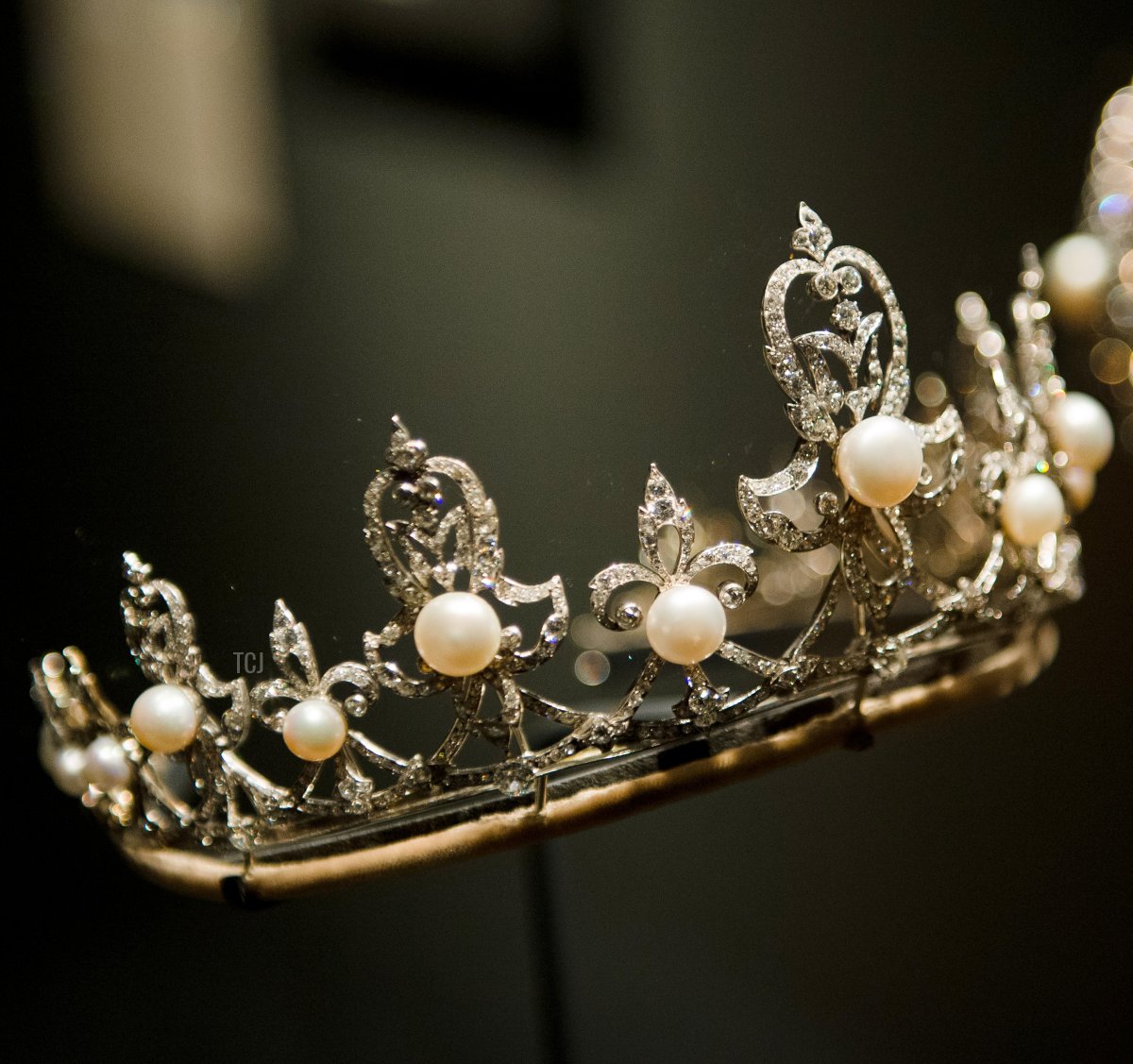
The diamond and pearl tiara from her collection can also be removed from its frame and worn as a necklace. In September 2013, the tiara was loaned to the Victoria & Albert Museum for their special “Pearls” exhibition. The tiara was later sold to the Albion Art Institute, but now it has found a new home in Qatar.
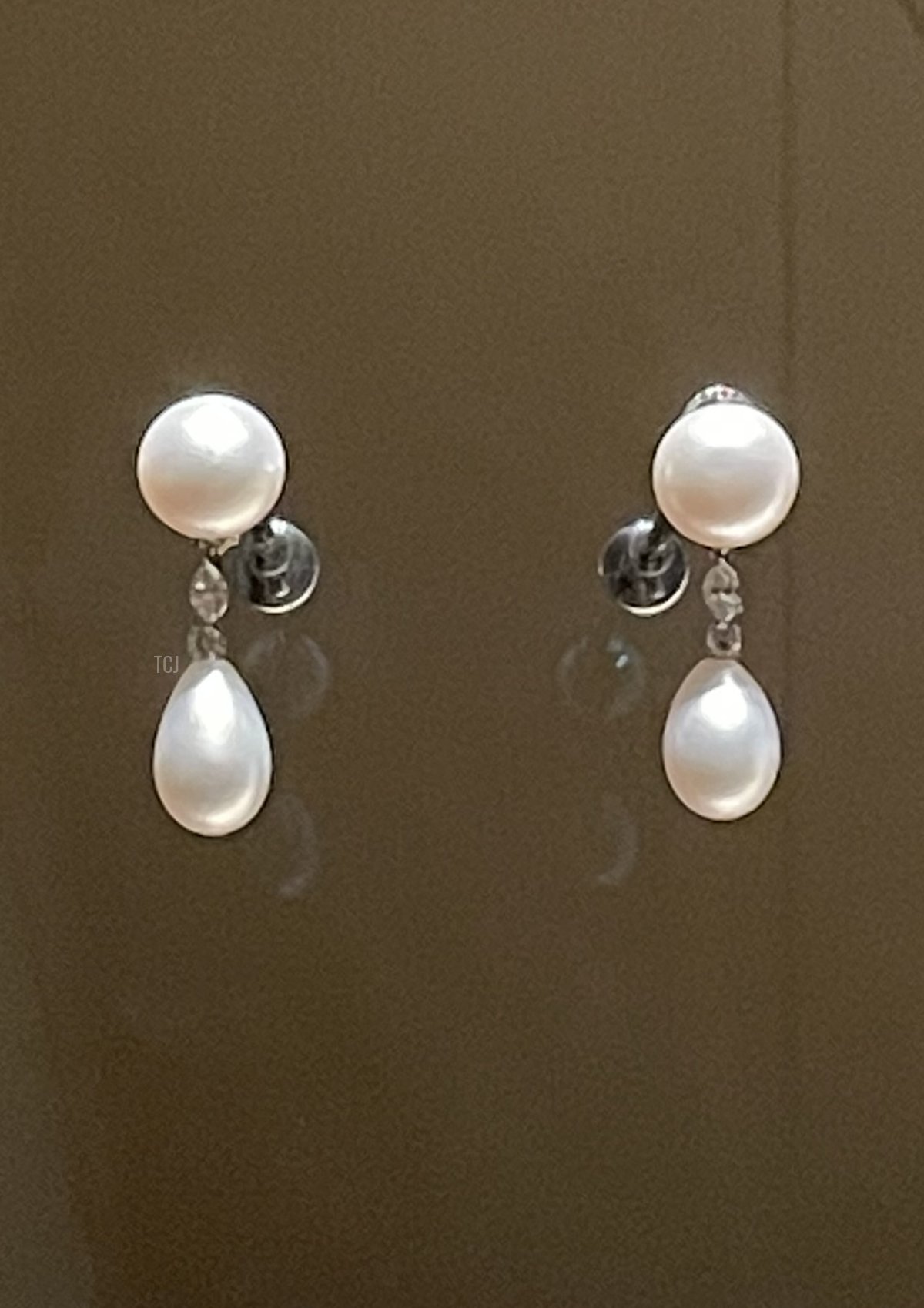
And finally, we’ve got a look at a pair of pearl and diamond earrings that should look quite familiar if you read yesterday’s article about La Peregrina. These are the Bulgari pearl drop earrings that Elizabeth Taylor often paired with that necklace.
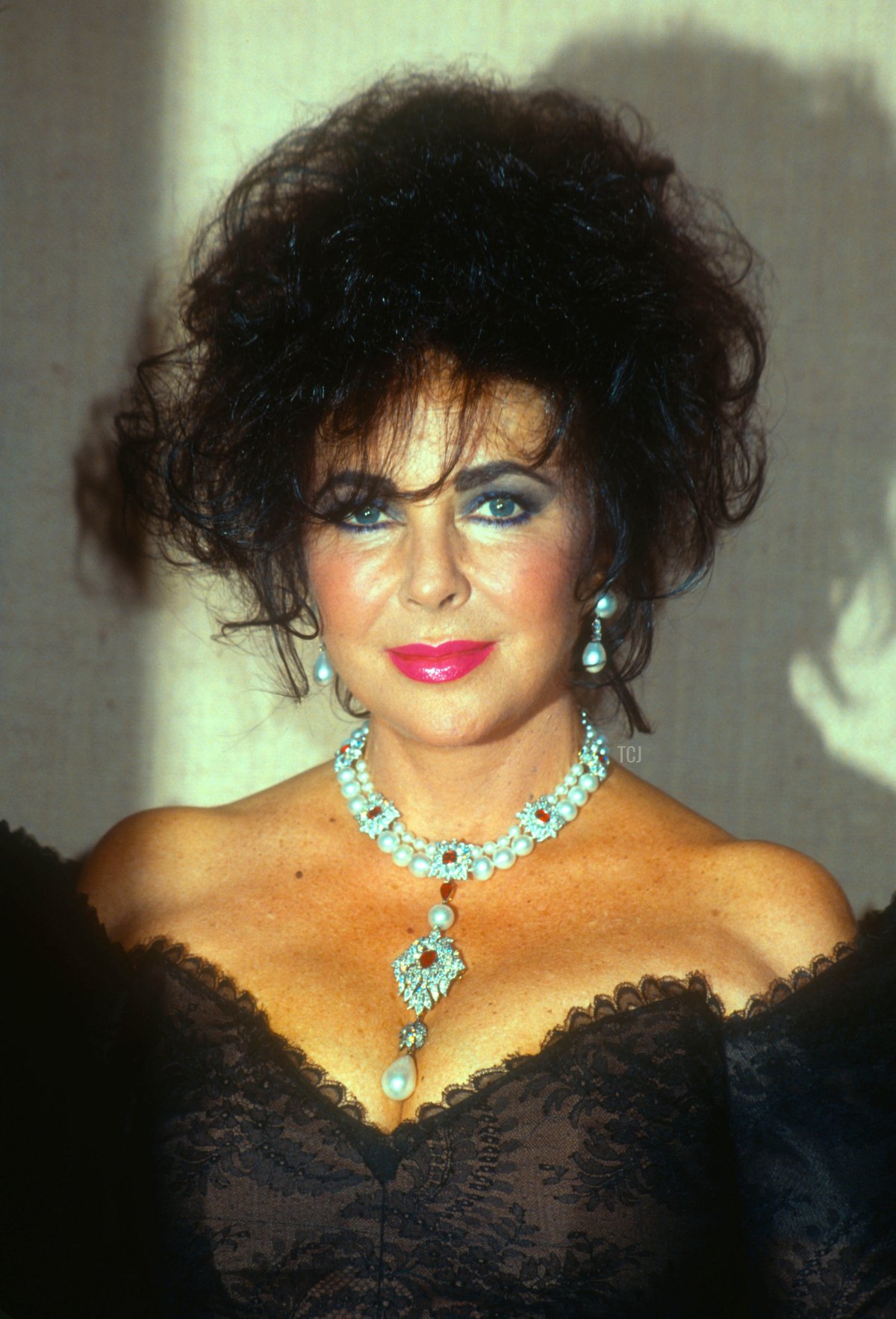
Here’s Taylor wearing the earrings with La Peregrina in Beverly Hills in 1992. The earrings were gifted to Taylor in 1972 by Aaron Frosch, an attorney and friend of Taylor and her then-husband Richard Burton.
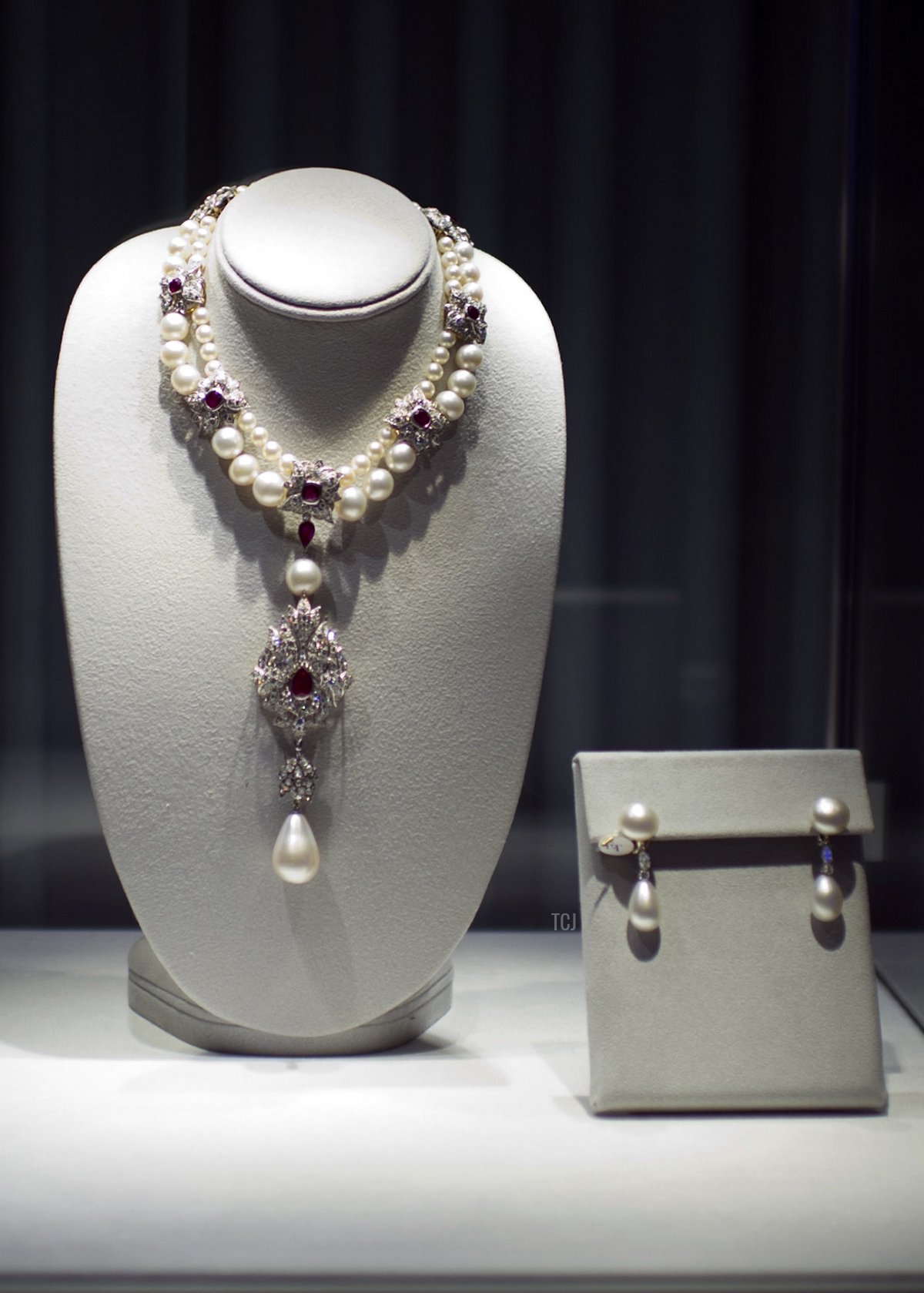
The earrings were sold in December 2011 as part of the auction of Taylor’s legendary jewelry collection. They were lot #11 in the sale. Estimated to bring between $400,000-$600,000 USD, they sold for a whopping $1,986,500.
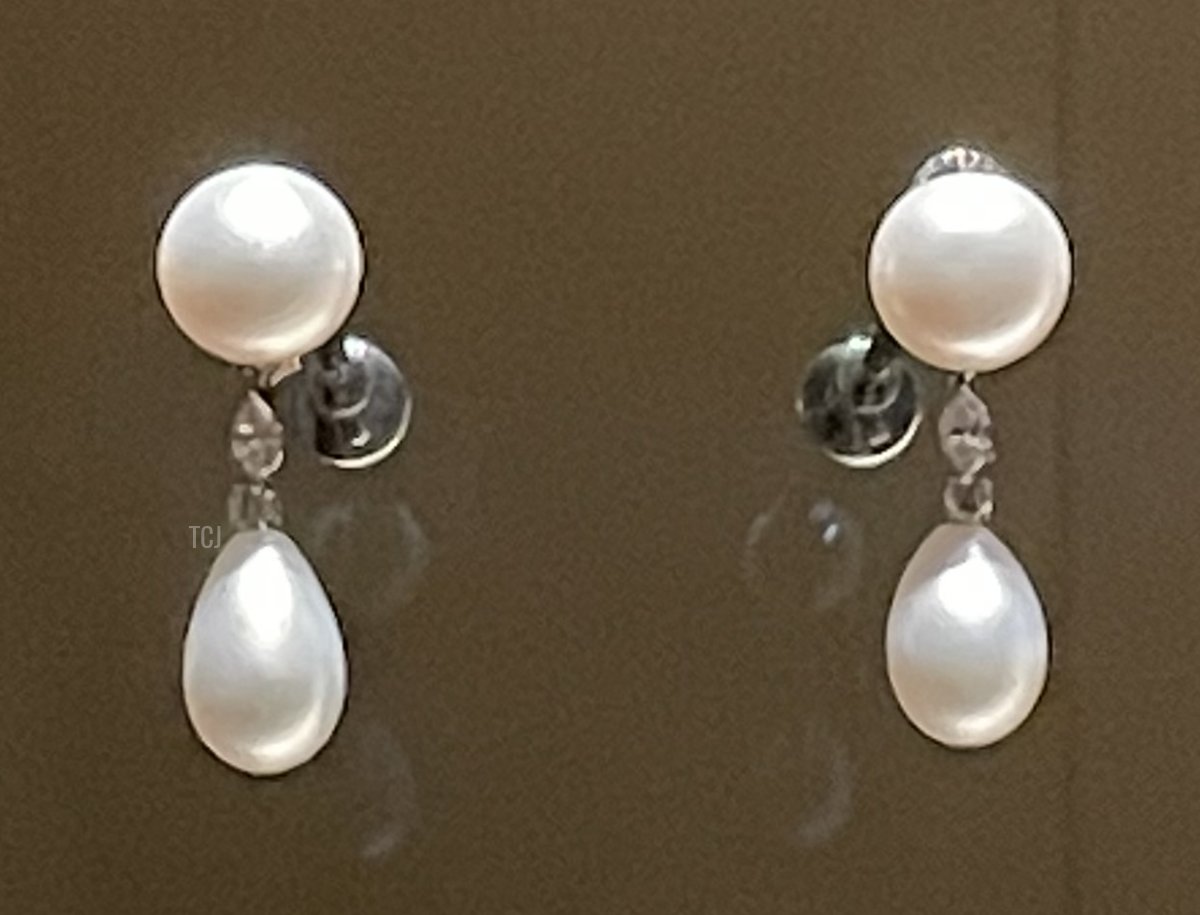
And we know where they ended up: the collection of the National Museum in Doha. If only we knew where La Peregrina was, too!
Please joining me in sending huge thanks once again to Joey for sharing his museum experience with us!
Leave a Reply
You must be logged in to post a comment.